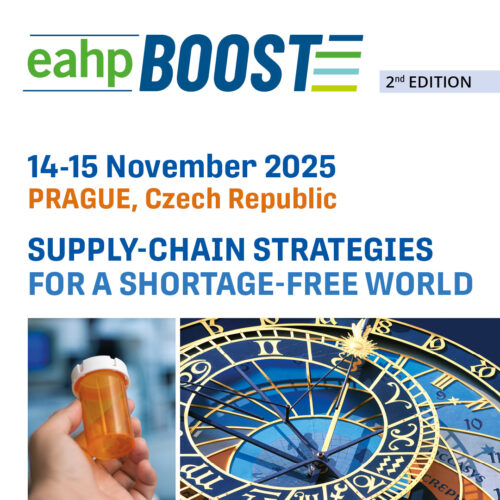Evaluation of tetracosactide peptide in galenic formulations for rapid adrenocorticotrophic hormone stimulation test
Pdf

European Statement
Production and Compounding
Author(s)
Aleksandra Bračko, Janez Ilaš
Why was it done?
The rapid adrenocorticotrophic hormone (ACTH) stimulation test is a commonly performed test in all hospital departments of the University Medical Centre Maribor. The reason for its widespread use lies in its simple execution using a pre-filled syringe containing precisely 1 µg of tetracosactide solution. Until the year 2016, we prepared a 5 ml solution with a concentration of 5 µg/ml in glass vials. Based on a literature data we set a shelf life of three months from the date of production for the solution filled in plastic syringe. The solution in glass vials has a shelf life of four months. We wanted to confirm this shelf-life with several analytical methods.
What was done?
The aim of our work was the qualitative and quantitative evaluation of tetracosactide peptide in a solution with a concentration of 5 µg/ml, filled in glass and plastic containers and stored under different conditions, using multiple methods. We stored the sample solution of tetracosactide for five months under various conditions. We performed the analysis using the Qubit 4 fluorometer, the Bradford method and method based on ultra-high-performance liquid chromatography coupled to high-resolution mass spectrometry (UHPLC–HRMS).
How was it done?
The first two relatively simple methods, Qubit 4 fluorometer, the Bradford method, did not provide the desired results. We assume that these methods were not sensitive enough for our sample with a concentration of 5 µg/ml. In the end, we used the UHPLC-HRMS analysis, which proved to be sensitive and highly selective.
What has been achieved?
The peptide molecule has eight basic centers in its structure, so both tetracosactide and each impurity were differently charged in an acidic medium, specifically +3, +4, +5, +6, +7, and +8. The distribution of charge of tetracosactide and impurities among the samples is very similar, with the highest proportion represented by molecules with a charge of +6. We have identified 11 impurities. The highest proportion was represented by impurity with the increased mass of 16 Da (tetracosactide sulfoxide). HPLC-HRMS method is highly selective and allows identification of each impurity
What next?
Based on the findings we will validate a method for quantification of the selected impurities which will allow us to perform the stability study of according to the ICH guidelines.
Evaluation of microbiological shelf-life of preparations of cytotoxic agents in infusion bags combined with medical devices
Pdf

European Statement
Production and Compounding
Author(s)
Timea Botházi, Lone Madsen
Why was it done?
The purpose was to find data for an increased microbiological shelf-life of preparations of cytotoxic agents in infusion bags combined with medical devices. The aim was to increase microbiological shelf-life from 24 hours to 7 days. Existing data were studied to find evidence to support the prolonged shelf-life.
What was done?
The purpose was to find data for an increased microbiological shelf life of preparations of cytotoxic agents in infusion bags combined with medical devices. The aim was to increase microbiological shelf life from 24 hours to 7 days. Existing data was studied to find evidence to support the prolonged shelf life.
How was it done?
A team from the production and quality assurance departments worked together on writing a report that could provide the rationale for the change of shelf-life.
We collected data from
– supplier qualification of the medical devices
– aseptic process simulations (APS)
– process validations
Data were evaluated and risk assessment was performed.
Six medical devices were included.
All suppliers were qualified as low risk.
APS for the specific production process showed no growth.
Process validation data for two types of medical devices showed no concern regarding sterility of preparations.
What has been achieved?
The increase of shelf life was accepted. First product was Blincyto® in infusion bag with Take Set Swan-Lock ® with shelf life increased to 4 days. Patients now visit the oncology clinic only twice a week instead of daily thus saving time and transportation.
What next?
The result means that new product implementation is quick because the only things to evaluate are the stability of the substance and the compatibility of this with materials in contact with it.
























